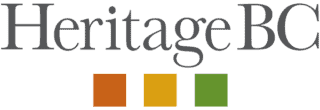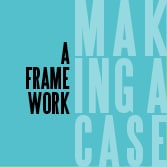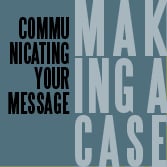- Heritage 101
- Advocacy
- Accessibility for Historic Places
- Climate & Sustainability
- Cultural Maps
- Heritage Place Conservation
- Heritage Policy & Legislation
- Homeowners
- Intangible Cultural Heritage
- Reconciliation
- Indigenous Cultural Heritage
- Setting the Bar: A Reconciliation Guide for Heritage
- 1. Heritage and Reconciliation Pledge
- 2. Acknowledging Land and People
- 3. Celebrating Days of Recognition and Commemoration
- 4. With a Commitment to Learn
- 5. Committing to Strategic Organizational Diversity
- 6. Mission-Making Room for Reconciliation
- 7. Possession, Interpretation, Repatriation and Cultural Care
- 8. Shared Decision Making
- 9. Statements of Significance and other heritage planning documents
- 10. Heritage Conservation Tools, Local Government Act
- Racism: Do Not Let the Forgetting Prevail
- Taking Action: resources for diversity and inclusion
- Webinars On-Demand
Making a Case: Knowing Your Impact
 Two standardized methods to measure the satisfaction of your customers are the American Customer Satisfaction Index and the Net Promoter Score.
Two standardized methods to measure the satisfaction of your customers are the American Customer Satisfaction Index and the Net Promoter Score.
Following are simplified approaches to these two measurements. They can be easily and effectively used in online surveys. Once you have completed the initial survey, you have a benchmark against which future surveys can be compared.
With good scores, you have strong evidence of your overall impact and community support.
Customer Satisfaction Index
This is a simplified approach to a standardized survey that measures the satisfaction of their own customers.
There are three core questions for your audience:
- What is your overall satisfaction with [our museum/heritage site]?
Very dissatisfied . . . . . . . . . . Very satisfied (1 to 10) - To what extent has [our museum/heritage site] met your expectations?
Falls short . . . . . . . . . . Exceeds expectations (1 to 10) - How well did [our museum/heritage site] compare with your ideal?
Not very close to ideal . . . . . . . . . . Very close to ideal (1 to 10)
The following simplified calculation will provide you with a number that expresses your audience’s satisfaction with your museum/heritage site:
- Add the averaged scores for the three questions and subtract 3 (Services like Survey Monkey will provide the average score for you.)
- Divide by 27
- Multiple by 100
Repeat the survey and calculation a year later and compare the numbers to determine if your audience’s satisfaction has changed.
Net Promoter Score
Net Promoter Score is a standard methodology that measures the likelihood of your audience returning or referring to friends and family. It is sometimes considered a measurement for word-of-mouth or the size of your audience that is speaking positively about you.
Ask your attendees:
- On a scale of one to ten, how likely are you to recommend my museum/heritage site to a friend, family member or colleague?
- On a scale of one to ten, how likely are you to return to my museum/heritage site for another visit/event?
For each question:
- Count the number of people who selected 1 through 6; these are your ‘detractors’ or the people least supportive. Divide this number by the total number of responses for this section.
- Count the number of people who selected 7 and 8; these are the ‘passives’, who are not likely to be very helpful, but at least they are not saying anything bad about you.
- Count the number of people who selected 9 or 10; these are your ‘promoters’ or your true fans. Divide this number by the total number of responses for this section.
Your score is calculated by subtracting the percentage of ‘detractors from the percentage of ‘promoters’. The calculation can be expressed as:
% of Promoters – % of Detractors = NPS
Here is an example:
- 125 people responded to your survey
- 25 people provided scores between 1 and 6. 25 responses divided by 125 is 20%
- 80 people provided scores of 9 and 10. 80 responses divided by 125 is 64%
- 64%-20% = 44%



